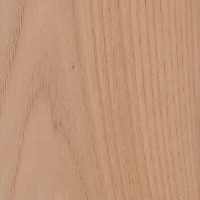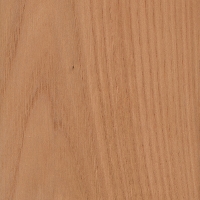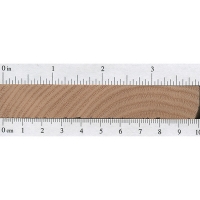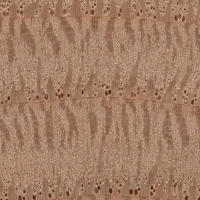 |
Common Name(s): Giant Chinkapin, Chinquapin Scientific Name: Chrysolepis chrysophylla (formerly Castanopsis chrysophylla) Distribution: Pacific Coast region of the United States Tree Size: 65-100 ft (20-30 m) tall, 3-4 ft (1-1.2 m) trunk diameter Average Dried Weight: 37 lbs/ft3 (515 kg/m3) Specific Gravity (Basic, 12% MC): .46, .51 Janka Hardness: 730 lbf (3,250 N) Modulus of Rupture: 10,700 lbf/in2 (73.8 MPa) Elastic Modulus: 1,240,000 lbf/in2 (8.55 GPa) Crushing Strength: 4,150 lbf/in2 (28.6 MPa) Shrinkage: Radial: 4.6%, Tangential: 7.4%, Volumetric: 13.2%, T/R Ratio: 1.6 |
Color/Appearance: Heartwood and sapwood are both light reddish brown and not clearly distinguishable from each other.
Grain/Texture: Grain is straight, with a medium texture and low natural luster.
Endgrain: Ring-porous to semi-ring-porous; exclusively solitary; large to very large earlywood pores in a broken row, small to medium latewood pores arranged radially; parenchyma diffuse-in-aggregates, banded; narrow rays, spacing fairly close.
Rot Resistance: Rated as non-durable to perishable; poor insect resistance.
Workability: Overall working characteristics are good for both hand and machine tools, though drying defects are common if lumber is not carefully dried. Glues, stains, and finishes well.
Odor: No characteristic odor.
Allergies/Toxicity: Besides the standard health risks associated with any type of wood dust, no further health reactions have been associated with Giant Chinkapin. See the articles Wood Allergies and Toxicity and Wood Dust Safety for more information.
Pricing/Availability: Supplies are usually limited to local supply, where the tree is sometimes processed into useable lumber. Prices should be moderate for a domestic hardwood.
Sustainability: This wood species is not listed in the CITES Appendices or on the IUCN Red List of Threatened Species.
Common Uses: Furniture, veneer, and small specialty wood objects.
Comments: Giant Chinkapin can be thought of as somewhere between chestnut (Castanea spp.) and oak (Quercus spp.) in terms of anatomy and mechanical characteristics. It was formerly placed in the Castanopsis genus, which now refers mainly to chinkapins native to eastern Asia.
None available.
None available.
Scans/Pictures: A special thanks to Ken Forden for providing the wood sample of this wood species.








A very nice wood to work. The contrast between early and late wood in this piece is pronounced and and quite pleasing.
Re. “Odor”. This is one of the sweetest smelling woods I have ever pushed through my table saw in 44 years of wood working.
I think the Average Dried Weight of Giant chinkapin shoukd be 32 lbs/ft3 not 37 lbs/ft3